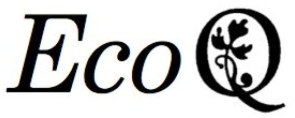 Fran Brady is the Quaker representative on the Eco-Congregation Ireland committee and attends Quaker Meeting for Worship at Eustace Street in Dublin. Fran also sits on the EcoQuakers committtee. Fran has contributed an article to the Irish Friends bi-monthly newsletter The Friendly Word entitled Saving Dandelions Saves Bees and the text is below. You can read older issues of The Friendly Word on the Quakers in Ireland website.
Fran Brady is the Quaker representative on the Eco-Congregation Ireland committee and attends Quaker Meeting for Worship at Eustace Street in Dublin. Fran also sits on the EcoQuakers committtee. Fran has contributed an article to the Irish Friends bi-monthly newsletter The Friendly Word entitled Saving Dandelions Saves Bees and the text is below. You can read older issues of The Friendly Word on the Quakers in Ireland website.
Wildflower habitats are being destroyed under the blades of lawn mowers, while bees and butterflies go hungry.
Dandelions are among the first flowers available for bees when they emerge from hibernation. If a hive survives the winter, beekeepers know the bees will be spared from starvation once the dandelions bloom. Dandelions are recommended as an important early-season pollinator plant by agricultural scientists and farmer support groups.
A team from the University of Edinburgh surveyed sixty large plots of flowers typically grown in wildflower meadows in the areas of Edinburgh, Bristol, Leeds and Reading. They found that a significant contribution to nectar and pollen early in the season comes from so called weeds such as dandelion and buttercup. Although dandelion pollen is just moderately nutritious, its nectar is abundant and it gives the bees a boost early in the season. A whole range of garden wildlife depends on dandelions for food.
Humans face the likelihood of losing much of their abundant choice of food if pollinators are wiped out. The humble, and often despised, dandelion comes into its own to jump-start the colony-building efforts of native pollinators, providing them with a ready source of early pollen. In turn these bees and their offspring will be pollinating our food crops.
The most common species of dandelion, Taraxacum officinale is native to Eurasia. With its light, easily spread seeds Taraxacum officinale has spread extensively and has become naturalized in disturbed areas, including lawns. However, dandelions are unpopular in the manicured lawn. They are demonised as one of the most pernicious weeds. The tap roots are difficult to dig out and the plant is very successful at propagating itself. It is one of the first flowers we see in spring and the last in autumn.
A very simple way to help honey bees is to refrain from killing the dandelions in your lawn. So hold back on mowing the dandelions. I was devastated to read the myriad destructive ways that gardeners suggest to kill and eliminate dandelions. Among them are mowing, digging, smothering, scalding, salting and burning. This is environmental suicide. A lawn, managed to exclude all other forms of plant life, has a plant biodiversity of one plant, grass. The chemicals used to control perceived weeds reduce the surrounding biodiversity. The presence of dandelions increases biodiversity. A patch of dandelions can support bees, butterflies, hoverflies, beetles and many other insects as they crawl and fly among the flowers. These insects, both adults and larvae, attract birds.
Native bees need dandelions as an early source of pollen and nectar. Dandelions do not always need the bees for pollination. They can produce seeds by apomixis, a process of asexual reproduction in which each resulting seed contains two sets of maternal chromosomes. Each dandelion plant produced from such seeds is a clone of the mother plant. Dandelions resort to pollination where introduction of new genes might lead to improved capacity for survival. There can be differences in individual plant height, growth habit, and other characteristics between populations of dandelions. Reduced plant height and a more sprawling growth habit are characteristics that favour survival in areas of frequent mowing.
Some 4,000 of Europe’s vegetable varieties exist thanks to pollination by bees. As well as ensuring the pollination of our food crops dandelions are a nutritious food in their own right. They are edible and nutritional, more nutritious than spinach. They contain high levels of vitamin A, potassium, and beta carotene, with notable amounts of vitamins C and D, iron, zinc, manganese, magnesium, and phosphorus. The leaves, roots, and flower heads can be consumed in a variety of fresh and cooked dishes. The juice of the plant’s root is still used by herbalists to treat diabetes. It is also prescribed as a mild laxative and is considered one of the best herbs for building up the blood.
“Homelessness” is a threat to bees, as the intensification of farming wipes out their natural habitats. Hunger is another, as towns and gardens are emptied of the wild flowers we call weeds. Let’s leave more dandelions in the cracks, for a start. Do not scorn the dandelion-filled garden which in the mind of the tamed gardener is a blemish in the neighbourhood. And for Quakers, especially those who have areas of ground surrounding their Meeting Houses, let’s afford dandelions a refuge, an amnesty, wherever they happen to pop up. In the long term they are friends, not foes.
